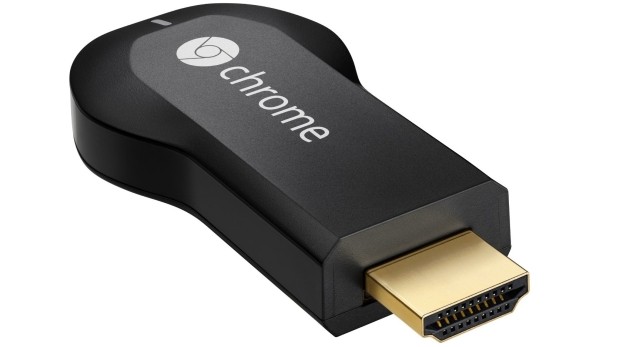
25 Aug The Chromecast of Google turns your TV into a Smart TV
It is a simple and inexpensive device, but to be very useful if you do not want to invest heavily in a new TV
For many it is important to have a TV that can connect to the Internet or ‘smart.’ What do I do if I want to still make a strong investment in buying a new one? And what if a couple of years ago I bought a TV , looks great but not Smart?
Google offers Chromecast , a small and inexpensive device good performance. Perhaps at this time you’re also thinking about the alternative of Apple TV. But this comparison is discussed below.
DESIGN
The Chromecast is very similar to a USB memory on both dimensions (35 mm x 71 mm x 11 mm) and weight (34 grams).
The only difference is primarily-and to be connected to one of the HDMI inputs on the TV. Power for the device to work is achieved through a USB cable connected to a TV input.
PERFORMANCE
Installation and configuration is very simple. Only required to link to a Wi Fi network and then download (Chromecast) application to an Android or iOS device.
Applications and functions compatible with the function display an icon that allows for the function of mirror and the TV show that appears on the device.
What is the main problem with the device? Do not have many compatible applications.
As a product of Google, the Chromecast he will have his enjoyment when combined with an Android device. If one uses iOS, the functions are more limited.
There are apps like Netflix already optimized to work with Chromecast.
You can also control this device from a laptop (laptop). However, you can only do it through the Chrome browser extension called Google and Cast having previously installed.
CONCLUSION
The Google Chromecast is a cheap and simple alternative to convert a regular TV into ‘smart’.
Pros
- It is easy to transport, install and configure.
- It’s cheap
Against
- It has many applications yet.
- No offers support for Windows Phone and BlackBerry.
Additional Information
Last year I published my review of the Apple TV . From my point of view I can say that each has its strengths and weaknesses. One has more applications, the other is more portable, one is more attractive, the other is cheaper. I can say that both fulfill its mission and provide alternatives based on the preferences of each user.


